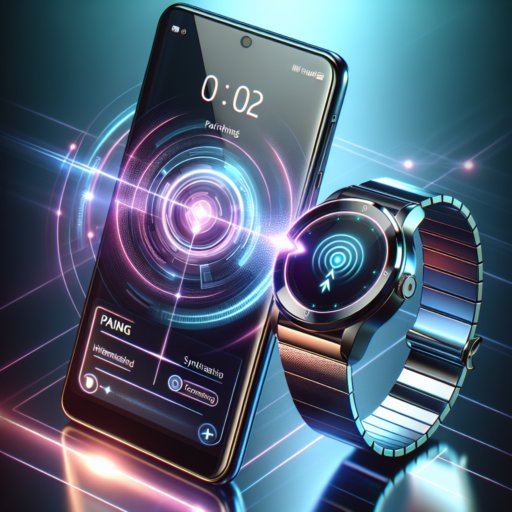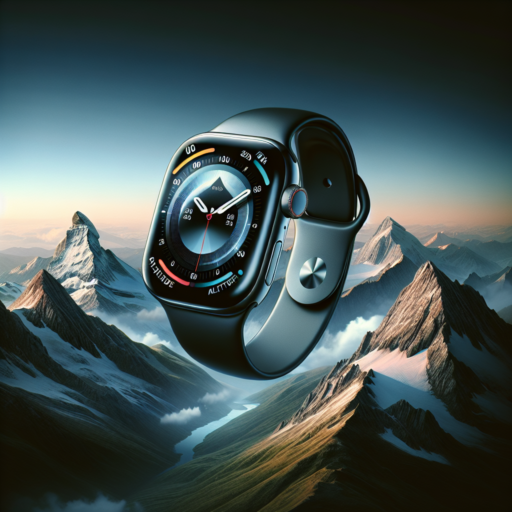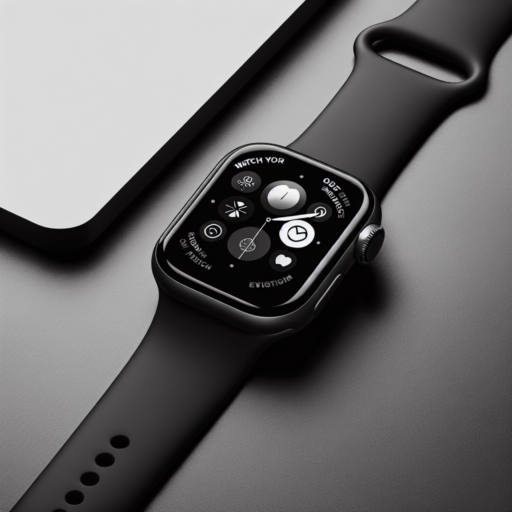How to Effortlessly Pair Your Watch with Your Phone
Pairing your watch with your phone can enhance your digital experience, making it more streamlined and efficient. Whether it’s an Android or iOS device, the process can be remarkably simple if you follow a few essential steps. This guide is designed to help you connect your devices with ease, ensuring a seamless integration of technology into your daily life.
Initial Steps Before Pairing
Before diving into the pairing process, ensure your phone’s Bluetooth is turned on. This can typically be found in the settings menu under ‘Bluetooth’ or the ‘Connections’ section. It’s also worth checking that both your phone and watch are fully charged to prevent any disruptions during the setup.
Pairing Your Watch with Your Phone
Initiate the pairing process by accessing the app corresponding to your watch on your phone. For Apple Watches, this would be the ‘Watch’ app, whereas Android users should look for the ‘Wear OS by Google’ app. Follow the on-screen instructions which usually involve holding your watch close to your phone until a pairing code appears. Confirming this code on both devices will complete the connection.
For users seeking an even smoother pairing experience, many smartwatches now offer QR codes that can be scanned using your phone’s camera. This method bypasses the need for manual code entry, further streamlining the pairing process. Remember, regular updates for both your watch and phone can enhance connectivity and introduce new features that improve how your devices work together.
Step-by-Step Guide to Connecting Your Smartwatch to Your Smartphone
When embarking on the journey of connecting your smartwatch to your smartphone, it’s crucial to understand that the process may vary slightly based on your devices’ operating systems. Yet, the fundamental steps remain relatively consistent across different brands and models. This guide ensures a smooth pairing process so you can harness the full potential of your smartwatch without any hitches.
Ensure Compatibility
Firstly, verify that your smartwatch is compatible with your smartphone. Most smartwatches are designed to work seamlessly with both iOS and Android platforms, but it’s always wise to check. Visit the smartwatch’s official website or consult the user manual to confirm compatibility. This is a crucial step, as attempting to connect incompatible devices can lead to frustration and wasted time.
Download the Appropriate App
Once compatibility is confirmed, the next step involves downloading the smartwatch’s companion app onto your smartphone. For Android users, this typically means visiting the Google Play Store, while iOS users should head to the Apple App Store. Search for the app by name, and ensure you’re downloading the correct version by checking the app’s developer and the user ratings. Installing the wrong app can prevent your devices from syncing properly.
Commence the Pairing Process
To begin the pairing process, ensure that both your smartwatch and smartphone are charged and powered on. Navigate to the Bluetooth settings on your smartphone and turn on Bluetooth. Then, boot up your smartwatch and select the ‘Pair with Phone’ option, which may be found within its settings menu. On your smartphone, scan for new devices and select your smartwatch from the list of available Bluetooth devices. A pairing code may appear on both devices; verify that they match and accept the pairing. This mutual acceptance ensures a secure connection has been established.
Remember, a successful connection not only enhances your daily productivity but also maximizes the functionalities available at your wrist. By following these steps carefully, you’ll be well on your way to enjoying a streamlined digital experience between your smartwatch and smartphone.
Common Pairing Issues: Troubleshooting Tips for Watch and Phone Connectivity
Pairing your smartwatch with your phone should be a seamless process, but sometimes, it turns into a frustrating ordeal. Whether it’s due to software updates, compatibility issues, or simple missteps during the pairing process, getting your devices to communicate effectively is crucial for maximizing their utility. Here, we delve into common pitfalls and provide actionable troubleshooting tips to ensure your watch and phone connectivity is as smooth as expected.
Checking Compatibility and Updates
One of the first steps in troubleshooting connectivity issues between your watch and phone is to ensure they are compatible. Not all smartwatches work with every smartphone, and vice versa. Moreover, both devices must be operating on the latest software versions to communicate effectively. Regularly check for and install any available updates for both your smartwatch and smartphone to enhance compatibility and improve connection stability.
Resetting and Re-pairing Devices
If you’re experiencing ongoing pairing issues, sometimes starting from scratch is the best approach. Begin by unpairing or forgetting the device from both your watch and phone. Restart both devices to clear any temporary glitches that may be hindering the pairing process. After rebooting, attempt to re-pair the devices by following the manufacturer’s recommended pairing procedure. This often resolves persistent connectivity problems.
Maximize Your Smartwatch’s Features by Syncing with Your Phone
Syncing your smartwatch with your phone unlocks a world of possibilities and maximizes the features available at your wrist. By establishing this connection, you can receive notifications directly on your smartwatch, making it easier to stay updated without constantly checking your phone. Whether it’s calls, texts, or app notifications, everything is more accessible.
Moreover, syncing allows for a more integrated fitness tracking experience. Your smartwatch can record your workouts, track your steps, and monitor your heart rate, while your phone can store and analyze this data over time. This seamless transfer of information helps in setting fitness goals and monitoring progress through comprehensive reports available on your phone.
Additionally, by syncing your smartwatch with your phone, you can control media playback, use voice commands to send texts or make calls, and even navigate with GPS, all from your wrist. This synergy enhances your productivity and ensures that you make the most out of both devices.
Compatibility Checklist: Ensuring Your Watch and Phone Work Together
When it comes to syncing your watch with your phone, compatibility is the key to a seamless experience. The myriad of options available in the market today can make this seem like a daunting task. However, by employing a straightforward compatibility checklist, you can easily ensure that your smartwatch and smartphone function together harmoniously.
First and foremost, check the operating system (OS) compatibility. Smartwatches are typically designed to work with specific operating systems. For instance, an Apple Watch is optimized for iOS devices, whereas Wear OS watches are more compatible with Android smartphones. Understanding the OS ecosystem is crucial to avoiding any connectivity issues between your devices.
Consider Bluetooth Version and Connectivity
Another vital aspect to examine is the Bluetooth version of both your phone and smartwatch. Compatibility isn’t just about the software; the hardware plays a significant role too. Ensure that both devices support the same Bluetooth version for optimal connection stability and range. Additionally, verifying whether your devices can maintain a continuous connection without frequent disconnections is essential for a satisfactory user experience.
Lastly, the availability of companion apps in your phone’s app store is a critical factor. These apps are designed to bridge the gap between your phone and smartwatch, allowing for features like notifications, fitness tracking, and more to be seamlessly integrated. Checking if the necessary companion app is compatible with your phone’s OS completes the basic checklist for ensuring your devices work together effectively.
The Benefits of Pairing Your Watch with Your Phone
In the era of smart technology, the synchronization of our gadgets reveals a bounty of advantages, significantly when it’s about pairing our wristwatch with our smartphone. This integration is not just a statement of fashion or convenience but unfolds a suite of functionalities that can enhance our day-to-day activities. Let’s delve into how this seemingly simple action can have profound impacts on our digital lifestyle.
Seamless Connectivity on the Go
One of the most immediate benefits of pairing your watch with your phone is the seamless connectivity it offers. Whether it’s receiving call notifications, reading messages, or even dismissing alarms without touching your phone, the integration provides an unmatched level of convenience. This hands-free communication means you can stay connected without interrupting your current tasks, be it a workout session, a meeting, or while cooking.
Health and Fitness Tracking Enhanced
For the health-conscious, this pairing is a boon. Smartwatches equipped with fitness tracking capabilities, when synced with the comprehensive apps on your phone, offer a detailed overview of your health metrics. This collaboration goes beyond counting steps or monitoring heart rates; it’s about getting personalized reports and insights into your physical well-being. Such in-depth health monitoring guides you in setting realistic fitness goals and achieving them with precision.
Never Miss Out on Important Notifications
With our lives becoming increasingly fast-paced, it’s easy to overlook important notifications. Pairing your watch with your phone ensures that you’re always in the loop. Filter your notifications, so you only get alerted about the emails, calls, or messages that matter most to you. This benefit is about prioritizing your peace of mind, ensuring that essential communications are never missed amidst the daily hustle.
Top Watch Brands and Their Phone Pairing Processes
In the era of smart technology, the synergy between wearables and smartphones has become more than just a convenience; it’s a lifestyle. Among these, smartwatches stand out as quintessential companions to our mobile devices, seamlessly integrating with them to offer a plethora of features right on our wrists. However, the process of pairing these smartwatches with our phones can vary significantly across different brands. Understanding these pairing processes can enhance your experience and ensure you get the most out of your device.
Apple Watch and iPhone: A Seamless Integration
Apple has always emphasized the seamless integration of its products, and the Apple Watch is no exception. Pairing an Apple Watch with an iPhone is an intuitive process, beginning with holding the watch close to your iPhone and waiting for the pairing screen to appear. The process continues in the Apple Watch app on your iPhone, where you can set up and customize your watch’s settings. It’s a straightforward approach, designed to get your devices working together as quickly as possible.
Pairing Android Watches with Smartphones
For users in the Android ecosystem, the process might involve a few more steps but is still remarkably user-friendly. To pair an Android-based smartwatch, one usually needs to download a specific companion app like Wear OS by Google on their smartphone. From there, turning on Bluetooth on both devices will allow them to find each other and initiate the pairing. This method provides flexibility, as it supports a wide range of devices across different brands, making it a versatile option for many users.
Each brand offers its unique approach to enhancing the smartwatch experience through seamless phone pairing. While these methods may differ, the end goal remains the same: to efficiently integrate your smartwatch with your smartphone, amplifying the capabilities and functionalities of both devices. As smartwatches continue to evolve, we can anticipate even more refined and straightforward pairing processes in the future.
Advanced Settings: Customizing Your Watch-Phone Connection for Efficiency
Exploring the advanced settings of your watch-phone connection opens a new realm of possibilities for personalizing your tech experience. By diving into these custom options, users can significantly increase the efficiency of their devices, ensuring a seamless integration between their smartwatch and smartphone. This adjustment process is not only about enhancing functionality but also about making your daily tech interactions more intuitive and streamlined.
In the realm of advanced settings, several options stand out for their ability to transform your device usage. For instance, notification management allows you to select which notifications are important enough to appear on your smartwatch, reducing distractions and focusing only on what truly matters. Similarly, adjusting the sync frequency between your devices can help conserve battery life while keeping the information up-to-date. Such tweaks ensure that your watch and phone communicate efficiently, proving especially useful for those with a busy lifestyle.
Another crucial aspect to consider is the customization of quick response messages. This feature is invaluable for sending speedy replies when you’re unable to access your smartphone directly. By pre-setting these messages, you ensure that your responses are not only swift but also tailored to your communication style. Embracing these advanced settings not only improves the functionality of your devices but also enriches your interaction with technology on a day-to-day basis.
No se han encontrado productos.
User Experience: Real-Life Tips on Getting the Most Out of Your Paired Devices
Optimizing the user experience for paired devices has become a cornerstone of modern digital interaction. Whether you’re syncing a smartwatch with your smartphone or connecting a game controller to your console, the seamless operation between devices significantly enhances usability and overall satisfaction. By focusing on key areas such as compatibility, connectivity issues, and customization options, users can elevate their experience to new heights.
Ensuring Compatibility for a Smooth Experience
One of the first steps in maximizing the user experience with paired devices is ensuring compatibility. This means not only verifying that your devices can technically work together but also that they do so efficiently. Users should pay close attention to the hardware and software requirements of both devices. Taking the time to check for compatibility before making a purchase or attempting to pair can save a considerable amount of frustration and ensure a better match between devices, leading to enhanced performance and functionality.
Tackling Connectivity Issues Head-On
Connectivity issues can often be a significant hurdle in achieving a seamless user experience. Interference, range limitations, and software glitches are just a few of the common challenges faced when pairing devices. Proactively troubleshooting these issues by updating software, resetting connections, and ensuring devices are within a suitable range can prevent disruptions. Additionally, consulting user manuals or online forums can provide valuable insights and solutions from other users who have faced similar challenges.
Customizing Your Devices for Optimal Use
Customization plays a pivotal role in extracting the most out of your paired devices. Many devices offer a range of settings that can be adjusted to cater to your preferences and usage habits. From configuring notification settings on your smartwatch to personalizing the control layout on your game controller, taking advantage of these customization options can significantly enhance your user experience. Moreover, exploring third-party apps or software that offer additional customization features can reveal new ways to optimize and enjoy your devices.
Security Concerns: Protecting Your Data While Pairing Your Watch with Your Phone
Understanding the Risks
In the digital age, pairing your watch with your phone has become more than a convenience—it’s a necessity for many. However, this connectivity brings with it security concerns that cannot be overlooked. When your devices are connected, they exchange a wealth of information, making them a target for cyber threats. It’s crucial to understand the vulnerabilities such as unauthorized access, data breaches, and even eavesdropping that can occur if not properly secured.
Strategies for Enhancing Security
To mitigate these risks, it’s important to implement robust security measures. Start by ensuring that both your phone and watch are always updated with the latest software, as these updates often contain critical security patches. Utilize strong, unique passwords for each device and consider enabling two-factor authentication (2FA) for an additional layer of security. Be wary of public Wi-Fi networks when pairing your devices, as these can be hotspots for hackers looking to intercept your data.
Limiting Data Exposure
Minimizing the amount of sensitive information stored on your devices can significantly reduce the impact of a potential security breach. Evaluate the permissions granted to apps on both your watch and phone, limiting them to only what’s absolutely necessary for functionality. Additionally, regularly review the data shared between your devices to ensure that only essential information is being transferred. Being proactive in managing your devices’ security settings can make a significant difference in protecting your data.




